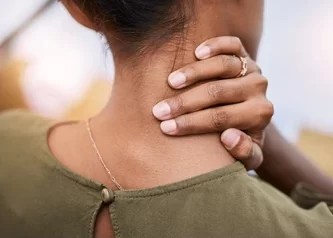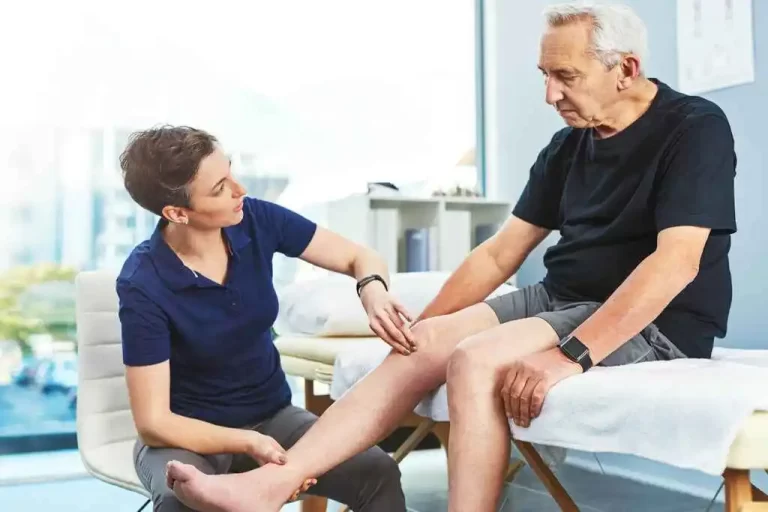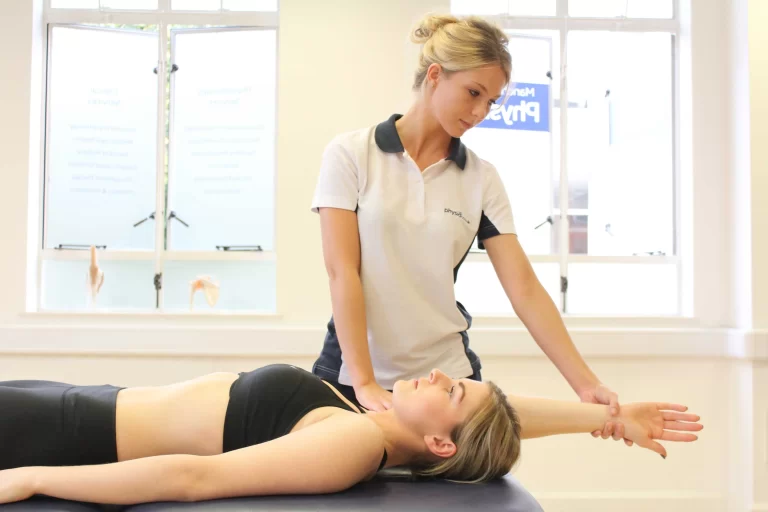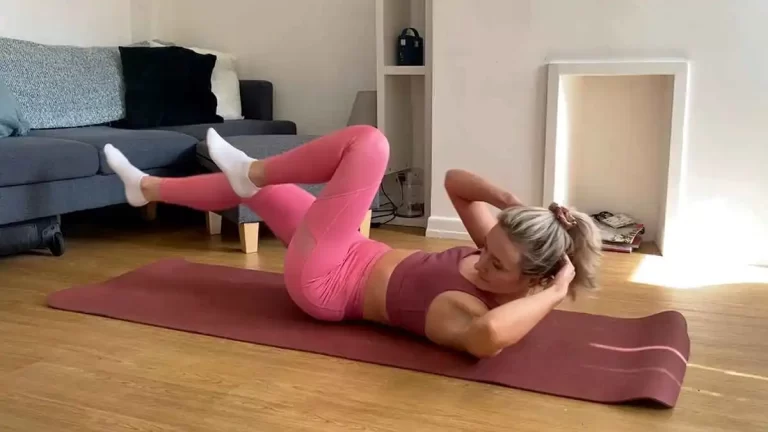18 Best Exercises For Rotator Cuff Tendinitis
Physical therapy, rest, and targeted exercises designed to increase flexibility and strengthen the muscles surrounding the shoulder joint are frequently used in the treatment of rotator cuff tendonitis. However, not every exercise is good for those with rotator cuff tendonitis because some of them can make the condition worse and worsen symptoms.
We’ll look at some of the greatest Exercises For Rotator Cuff Tendinitis in this article, with a concentration on mild strengthening and stretching techniques that can reduce pain, improve shoulder function, and resist further damage.
Introduction:
Rotator cuff tendonitis, or inflammation of the major shoulder tendons, is the most prevalent cause of shoulder pain. A difficult aching at the outside point of your shoulder is the first thing that happens when you pull, push, reach up, or raise your arm to the side. It aches to rest on your shoulder as well, and if you move onto it at night, the pain may wake you up. Even getting dressed might be difficult. The shoulder as a whole may become severely affected at some point by the pain.
The rotator cuff, which consists of four muscles, improves the glenohumeral joint’s stability and range of motion. With the help of an exercise conditioning program, you may resume your normal activities following surgery or an injury and lead a healthier, more active lifestyle. It might also be simpler for you to get back into sports and other outdoor activities if you follow a well-planned conditioning program.
Muscle Groups in Target;
- Deltoids
- Trapezius muscles
- Rhomboid muscles
- Teres’s muscles
- Supraspinatus
- Infraspinatus
- Subscapularis
- Triceps
What functions are performed by the rotator cuff muscles?
Many upper-body movements, such as flexion, extension, abduction, internal and external rotation, and many more, are made possible by the coordinated action of your rotator cuff muscles. They are crucial in preserving the stability of your shoulder joint and the position of your humerus within the scapular small glenoid fossa.
They are involved in all shoulder-related movements. Improper activation of the rotator cuff muscle group can result in restricted or affected athletic ability, as well as shoulder pain and discomfort. It might also interrupt your routine and lower your quality of life.
Advantages of rotator cuff exercises:
- Helps the shoulder joint to move more freely and perform better.
- Exercise can be helpful for posture.
- Gaining muscle and avoiding bone dislocation and irritation are how this exercise lowers pain.
- keeps up daily movements, such as pushing and pulling objects, to support performance maintenance.
- This exercise is going to strengthen the muscles in your shoulder joint.
- lessens shoulder joint pain. By strengthening your muscles, this exercise will increase the support that your strong muscles give to your joints.
Exercises For Rotator Cuff Tendinitis:
The following is a list of the finest exercises for treating rotator cuff tendinopathy.
Doorway stretch
- Start with spreading your arms out to the sides and standing in an open doorway.
- With both hands, grasp the doorway’s sides at or close to shoulder height while you lean forward into it until you feel a slight stretch.
- Straighten your back and shift your weight onto your toes.
- Feel like your front shoulder is stretched out.
- Refrain from pushing yourself too far.
- Hold this position for a few seconds.
- Then return to your neutral position.
- Then relax.
- Ten or five times over, repeat these exercises.

Elbow flexion
- When equally distributing your weight across both feet, keep your posture upright.
- Now grab a dumbbell.
- As you gradually raise the weight to your shoulder, continue your elbow close to your side.
- Hold this position for a few seconds.
- Then return to your neutral position.
- Then relax.
- Ten or five times over, repeat these exercises.
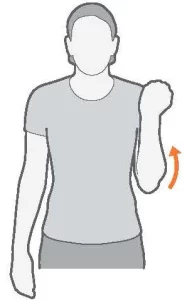
Side-lying external rotation
- Take a side-lying position on the uninjured side.
- Your arm should rest on your side with its elbow 90 degrees bent.
- Put your forearm on top of your belly.
- While holding a light dumbbell in the affected hand, keep your elbow strongly pressed against your side.
- Slowly raise it toward the ceiling.
- Put an end to your arm rotation if you begin to feel anxious.
- After a brief period, release the dumbbell and reposition your arm to the beginning position.
- Then relax.
- Ten or five times over, repeat these exercises.
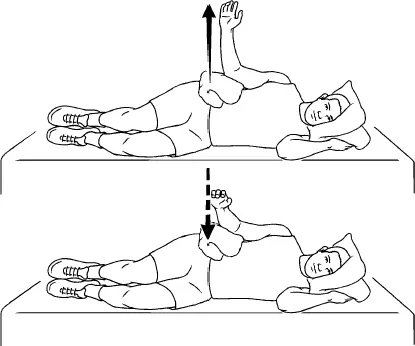
Standing row
- When you tie the ends of the elastic band into a loop, make sure it measures three feet in length.
- Attach the loop to a sturdy object, such as a doorknob.
- Holding the band in the same manner as before, bend your elbow at your side.
- Slowly bring your elbow back straight, keeping your arm near your side.
- Hold this position for a few seconds.
- Then return to your neutral position.
- Then relax.
- Ten or five times over, repeat these exercises.
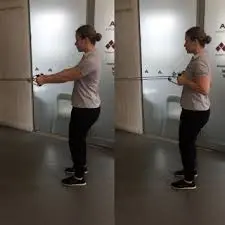
Internal and external rotation
- Lay down on your back on a level surface.
- Bend your elbow 90 degrees to point your fingers upward while you extend your arm straight out from your shoulder.
- Move your arm slowly at the recommended angle while maintaining your elbow bent and your body in the recommended position.
- Reduce the angle of your elbow to a 45° if the 90° position causes pain.
- Then return to your neutral position.
- Then relax.
- Ten or five times over, repeat these exercises.
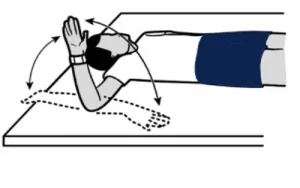
High to low rows
- It is recommended to fasten a resistance band to a strong item at or above shoulder height.
- Make sure the closure is tight enough so that pulling on it won’t cause it to come off.
- Raise the leg opposite to the injured arm as you bring yourself to one knee.
- Your body should be in alignment with your dropped knee.
- Put down your other hand while keeping your knee raised.
- Reaching out to securely grab the band, bring your elbow up against your body.
- Pull with your shoulder blades pressed down and together, keeping your back straight.
- Your body shouldn’t be twisted or moved with your arms.
- Then return to your neutral position.
- Then relax.
- Ten or five times over, repeat these exercises.
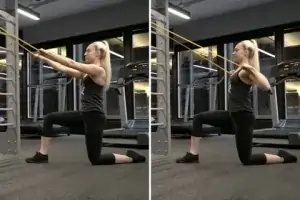
Arm crossover stretch
- Commence by taking a comfortable standing position on the ground.
- One arm should be raised straight up and parallel to the ground rather than held in place.
- Grasp the outstretched, raised arm by the wrist with your other hand.
- Pull the arm slowly across the front of the body, trying to hug the chest.
- Hold this position for a few seconds.
- Then return to your neutral position.
- Then relax.
- Ten or five times over, repeat these exercises.
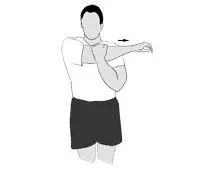
Horizontal abduction
- Reclining face down on a bed’s edge or a table.
- Lower your arm one side straight to the floor to complete the exercise.
- Holding your thumbs up, pull your arm up to the side until it is parallel to the surface.
- Hold this position for a few seconds.
- Then return to your neutral position.
- Then relax.
- Ten or five times over, repeat these exercises.
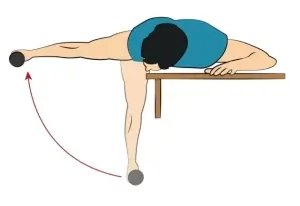
Wall push-ups
- You have to be ten to a few inches away from a wall while facing it.
- Set both hands shoulder-height against the wall.
- Slowly bend your elbows and turn your face in the direction of the wall.
- Your lower body needs to be straight.
- Hold this position for a few seconds.
- Then return to your neutral position.
- Then relax.
- Ten or five times over, repeat these exercises.
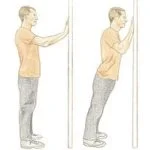
Pendulum
- To do the pendulum exercise, stand and lean forward, keeping your left arm free.
- Using your other arm as support, press yourself up against a table.
- From the lateral to the medial side, easily swing the that hangs arm forward, backward, and in a circle.
- Then return to your neutral position.
- Then relax.
- Ten or five times over, repeat these exercises.
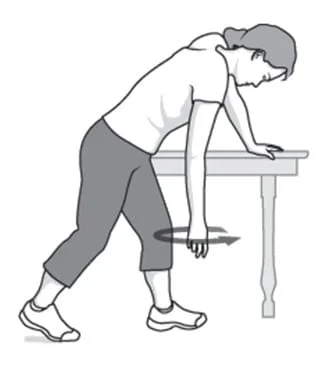
Sleeper stretch
- This exercise also works on the infraspinatus and teres minor muscles.
- You should lie on your side on a level, firm surface with your arm bent and the affected shoulder under you.
- Using your other arm to apply pressure to the side you are lying on, feel the strain at the back of the injured shoulder.
- Hold this posture for a short while.
- Then release your grip on your arm and allow it to drop for a short bit longer.
- Then relax.
- Ten or five times over, repeat these exercises.
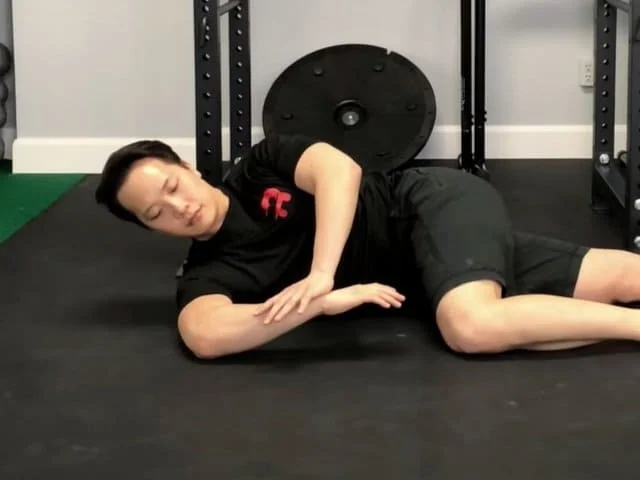
Pulling a lawnmower
- Step out with your feet shoulder-width apart.
- Under the foot on the affected arm’s opposite side, place a resistance band.
- Holding the opposite end of the band, with the affected arm facing you, make a vertical cross across your body.
- Flex your waist slightly to place the hand holding the band parallel to the opposing knee, keeping the other hand on your hip and not locking your knees.
- Take a straight posture and extend your elbow towards your outer ribs, simulating the starting of a lawnmower in slow motion.
- Keep your posture relaxed and squeeze your shoulder blades together as you stand.
- Then return to your neutral position.
- Then relax.
- Ten or five times over, repeat these exercises.
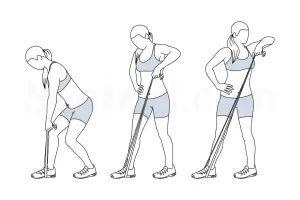
Bent-Over Reverse Fly
- To do a reverse fly, you have to hold the dumbbells.
- With your knees slightly bent and your feet shoulder-width apart, take a step outside.
- Maintain a straight back and a slight flexion in your hips.
- With both hands on a dumbbell, extend your arms out from your body; do not bend your elbows.
- Avoid raising your arms above shoulder level as you press your scapula together.
- Hold this position for a few seconds.
- Then return to your neutral position.
- Then relax.
- Ten or five times over, repeat these exercises.

Supported shoulder extensor stretch
- Reach out and grab a firm surface about the length of your arm.
- The back of a solid chair, a tabletop, or a doorknob would all be suitable locations.
- Straight arms and slightly bent knees should be used to lean forward.
- Lean your upper body down, letting your shoulders drop.
- You may need to reverse one or two steps because your shoulders are longer than usual.
- Hold this position for a few seconds.
- If you take a step back during your stretch, as you get up, take a step forward to keep your hands on the firm surface.
- Then stand up and relax.
- Ten or five times over, repeat these exercises.

Inverted row
- Adjust the barbell to your desired position. Measure your waist first.
- You will be able to fully extend your arms and keep your body off the ground as a result.
- Go sit down underneath the bar. Examine your ceiling above.
- To grab the bar, raise your hand.
- When your arms are fully extended, you should be able to grasp the barbell with an overhand grip.
- Your heels will be the only part of your body that touches the ground below, and your body will be hanging or slightly elevated.
- To support your lower back and keep your body straight from the waist to the feet, contract your buttocks and abdominal muscles.
- Lead with your chest as you lift yourself.
- The barbell or bands can be raised to chest height to perform the top action.
- Throughout every exercise, your body stays in a straight line, and your glutes and core get tighter.
- The barbell does not need to come into contact with your chest.
- As close as you can get.
- Keeping your arms fully extended, carefully lower yourself to the beginning position after a few seconds of holding and making sure the scapula retracts.
- Then relax.
- Ten or five times over, repeat these exercises.
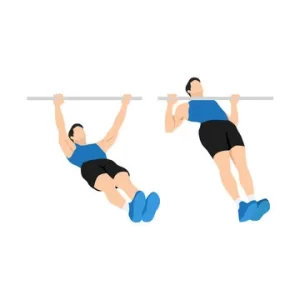
Dumbbell Lateral Raise
- Bend over and pick up a dumbbell in each hand.
- With your palms facing inward, place your arms by your sides.
- Match the width of your hips to the distance between your feet.
- Verify that your body is positioned correctly.
- Tense your abdominal muscles, pull your shoulders back, and focus straight ahead.
- Raise your arms two inches to either side at the same moment.
- You should be almost fully stretched with your arms as you raise and extend the weight to either side.
- When your elbows are shoulder height and your body is positioned in a “T,” stop.
- You take a breath in when you raise your arm.
- During the few seconds at the top of the movement, hold that position.
- Without difficulty Return your hands to your sides as you lower the dumbbell.
- Then relax.
- Ten or five times over, repeat these exercises.
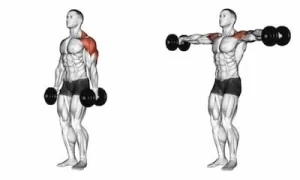
Wall climb (to the side)
- Set an arm’s length distance between your wounded shoulder and the wall.
- Raise your affected arm as high as the pain will allow, roughly thirty degrees off the wall in front of you.
- Instead of shaking his head, keep your shoulders down and remain relaxed.
- Do not sway to one side; instead, remain upright.
- Simply maintain that posture for a few seconds at most.
- With your fingers, carefully go back to the beginning.
- Then relax.
- Ten or five times over, repeat these exercises.

Elbow extension
- Maintain an equal distribution of weight on both feet as you take an upright posture.
- Lift and flex your elbow while supporting your head with weight.
- Cover your upper arm with the other hand to provide support.
- Slowly extend your elbow as you raise the weight overhead.
- Hold this position for a few seconds.
- Lower your arm carefully behind your head to reposition yourself in the beginning position.
- Then relax.
- Ten or five times over, repeat these exercises.
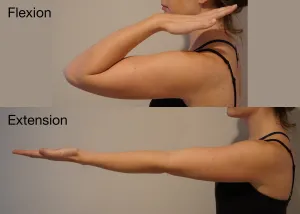
Health and Safety Considerations:
- Consult your physician before beginning an exercise plan for a rotator cuff difficulty.
- Before beginning these exercises, take a warm shower or apply a heating pad to your muscles.
- After performing these exercises, apply ice or a cold compress to ease any pain that might develop.
- If, however, you have severe pain, discontinue exercise and let your doctor know.
What preventative measures are necessary when exercising?
- Be cautious to keep your posture straight while working out.
- Take breaks between the exercises you do.
- Stop exercising if you experience any unexpected pain.
- For exercising through, loose, carefree clothing that promotes relaxation and mobility is perfect. Avoid wearing tight or stylish clothing.
- All exercises must be completed according to the protocol, which specifies the proper number of repetitions for each exercise as well as warm-ups and cool-downs.
- Keep in mind that using poor form can cause injury during exercise and limit your ability to achieve the results you want.
- Avoid engaging in any activities that cause you pain.
- Take your time when working out. It’s not required to go quickly.
- Increase the duration and repetition count of your workouts gradually to prevent overtraining and soreness in your muscles.
When do you not exercise?
- Severe muscular burning
- If you’re feeling unwell.
- If you feel any kind of pain or numbness.
- High Body Temperature
- Give up exercising if it hurts.
- Headache
What complications could result from a rotator cuff injury?
- Re-tearing of the rotator cuff muscle following healing is the most frequent effect.
- General surgery carries certain risks, including blood loss and difficulties from anesthesia.
Other issues include;
- Frozen shoulder
- Decreased strength of the cuff
- Lack of motion
Summary:
A rotator cuff injury can cause motor function loss and require continuous months of rehabilitation. Some workouts will strengthen your rotator cuff muscles and lower your chance of injury, as well as ones that could be harmful if done incorrectly.
By stretching and strengthening the rotator cuff, you can significantly lessen the pain and suffering that could have been caused by an impingement or rupture. You should work out under the supervision of your physical therapist to ensure that you are performing these exercises correctly and benefiting from them. Your injured shoulder can return to normal function and you can resume activities that you previously believed to be impossible with the help of a suggested physical therapy program.
You can increase your range of motion and strength following a rotator cuff injury, such as a rupture or strain, by engaging in specific stretches and exercises. These exercises are also helpful in speeding up the healing process and lowering the likelihood that issues may return.
FAQ:
How often should someone perform rotator cuff exercises each day?
Your shoulder has to have strong, long-lasting internal and external rotational movement. You should usually practice three or more rotator cuff exercise sessions every day, with each session lasting around five minutes.
Should I continue exercising if I already have rotator cuff pain?
Exercises that tone muscles may only result in slight pain. If you have acute or sharp shoulder pain, you must stop exercising for a few days and try applying ice to the area.
Which movements cause issues with the rotator cuff?
Those who have injured their shoulders should first refrain from doing any type of movement or activities that involve lifting weights. Don’t do any particular weight training activities in the gym, like overhead presses and pull-ups, or throw a ball.
Which signs indicate a potential rotator cuff tear?
When there is a dull discomfort in the shoulder joint. Get impatient as you sleep. Not big enough to reach behind your back and not small enough to make combing your hair easy.
Is it advantageous to stretch your rotator cuff?
The easiest way to avoid rotator cuff inflammation is to increase shoulder mobility through regular exercise and stretching. Good mechanics are eventually achieved by coordinated movement, which requires enough strength and flexibility in joints.
Does taking rest help the rotator cuff?
The standard recommendation from doctors for treating rotator cuff injuries is to rest your shoulder’s muscles and tendons.
References:
- On January 16, 2023, B. S. Pt. Isometric Shoulder Exercises. Superwell Health Care. Exercises for the isometric shoulder (#2696516) can be found at https://www.verywellhealth.com/text=Shoulder%20Extension%Isometric%20Text=Maintain_your_elbow%20 percent consecutivelyRelease the pressure gradually after 20 seconds at 20°C.
- Best rotator cuff stretches and strengthening exercises: The blog at yorkvillesportsmed.com Inside text reference: (Jey back, 2019)
- D. Bariya (2024, Feb. 22). The Finest Rotator Cuff Tendinitis Exercises. Clinic for Mobile Physiotherapy. Rotator cuff tendinitis exercises can be found at https://mobilephysiotherapyclinic.in/
- The Rotator Cuff and Shoulder Conditioning Program is described in Ortho Info – AAOS (n.d.). The recuperation portion of orthoinfo.aaos.org includes a shoulder training program and rotator cuff exercises.
- February 13, 2024 / Barta, K. activities to help the rotator cuff heal and become stronger. Doorway Stretch: Healthline.com/health/stretches-for-rotator-cuff-injuries Barta, 2024 is cited in the book.
- Kaiser Permanente | Rotator Cuff Exercises (n.d.). Kaiser Permanente, He.rotator-cuff-exercises.ad1509, https://healthy.kaiserpermanente.org/health-wellness/health-encyclopedia Citation inside the text: In the Kaiser Permanente n.d. Compressor Cuff Exercises
- Image 6, May 7, 2024; Set, S. F. 17 Variations of Resistance Band Rows: What Muscles Are Worked & How To? SET WITHIN SET. Band-row resistance: https://www.setforset.com/blogs/news/
- Image 12, Daisy. July 15, 2021c. Exercise Guide with Illustrations for Lawnmower Band Pull. SPOTEBI. You can find the lawnmower band pull exercise on https://www.spotebi.com.
- Image 14, The Redirect Notice, n.d. breast cancer surgery at home %https://www.google.com/url?sa=i&url=https%3A%2F%2Fmyhealth.alberta.ca%2Fbreast-cancer-surgery%2. Arm-shoulder exercises &psig=AOvVaw1t53jJrrc89JYwK1iBuXmQ &ust=1725338030650000 &source=images &cd=vfe&opi=89978449 &ved=0CBQQjRxqFwoTCNDi8Zy3o4gDFQAAAAAdAAAAABAI
- Image 17, Exercises Following Mastectomy (n.d.). Hospital Sunnybrook. Exercises for mastectomy recovery after surgery: https://sunnybrook.ca/content/?page=


